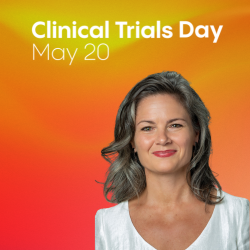As the clinical trial industry staggers through an epic pandemic called COVID-19, there’s been precious little time to think about planning for 2021 and beyond. However, with some states now lifting restrictions on certain activities such as elective medical procedures, the concept of “inching our way toward normal” is beginning to feel at least a tiny bit more plausible, says Kelly Schindelholz, director of monitoring at IMARC Research Inc.
There’s reason to celebrate at IMARC, Schindelholz says. “We’re going on our first onsite visit since mid-March next week,” she explains, describing a trial in upstate New York. IMARC, based outside Cleveland, has even begun taking tentative steps toward having some employees return to the office, with significant safety-related modifications now in the mix, such as social distancing and masks. “We also have a large amount of office space, so distancing is relatively easy,” she adds.
However, Schindelholz’s anecdotal optimism is firmly rooted in the reality of the here and now. “This is the new normal,” she says, adding that “it won’t be really normal for many months, at least.”
Stephani D. Hulec, MS, CCRA, associate director for monitoring services at IMARC, notes some sites are more open to the return of monitors who are in “driving range, meaning they don’t have to fly to get there.” Further, while some facilities are beginning to welcome clinical trial professionals back, with new safety protocols baked into the process, Hulec notes many sites “are still saying no to visits and may be saying that for a long time,” based in part on how overwhelmed they are as a facility and if they are in a relative “hot spot” geographically for the pandemic.
Hulec also notes it’s difficult to predict the impact furloughs and layoffs will have in terms of hiring and training new staff as trial work begins to ramp back up.
Schindelholz and Hulec are somewhat enthusiastic fans of remote monitoring, centralized monitoring, and other tactics and technologies that have risen to prominence in the clinical trials toolbox during the pandemic. “A lot of sites that had been saying no to [such practices] are now saying yes,” Schindelholz says. “Minds have been opened” to them. At the same time, both believe there are real limits to those tools. The new tools “won’t fully replace” onsite visits anytime soon, she adds. “Face time” is simply too important to give up completely, she adds.
Author: Michael Causey



